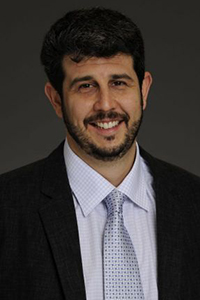Different Response Patterns to TMS Treatment for Major Depression Point to Possibility of Individualized Treatments
Different Response Patterns to TMS Treatment for Major Depression Point to Possibility of Individualized Treatments

It may soon be possible to make individualized treatment plans for different subsets of patients with treatment-resistant major depression, using a type of non-invasive brain stimulation therapy called TMS.
This is the implication of a new study, published in the American Journal of Psychiatry, in which a team from Canada followed up on the results of a clinical trial they published last year. That trial demonstrated the equal effectiveness of two forms of TMS therapy (transcranial magnetic stimulation) in patients with major depression who had failed to respond to one or more prior antidepressant treatments.
The trial also showed that roughly half of treatment-resistant patients responded to both forms of TMS tested—this meant that they had at least a 50% reduction in symptoms—and up to one-third achieved full remission of symptoms. The two types of TMS tested are called repetitive TMS (rTMS) and a newer type, called intermittent theta burst stimulation (iTBS), which delivers stimulation in about one-tenth the time (3 minutes vs. 37 minutes in standard rTMS therapy).
The same team, led by 2010 BBRF Young Investigator Daniel M. Blumberger, M.D., of the Centre for Addiction and Mental Health in Toronto, has now further analyzed data from the trial to look for associations between subsets of patients and the way they responded to each of the TMS methods.
They found four distinct groups among the 388 participants in the trials, aged 18 to 65, each with a current episode of major depression and failing to respond to one or more conventional antidepressant methods. Each patient received 4 to 6 weeks of treatment, consisting of 20 to 30 total brain stimulation sessions. Both forms of TMS tested worked equally well and elicited similar response types from patients, the team said.
One group, consisting of 11% of the participants, did not respond at all to TMS. A second group, 19%, responded rapidly, with most achieving full remission. Two other groups responded less fully, but in a significant and consistent manner: a group (30% of all participants) that began with more severe symptoms, and another that began with less severe symptoms (40%). In both of these larger groups, depression scores declined steadily during the trial, but did not, on average, decline as much as in the group that responded rapidly.
The rapid responders, 90% of whom achieved remission, tended to begin with milder depression symptoms. Older patients also tended to be more likely to have a rapid, beneficial response, for reasons the team cannot yet explain. Non-responders, on the other hand, tended to have more severe symptoms at the beginning of TMS treatments. Importantly, this group also included a large subset of patients in the trial (about one-third) who were taking benzodiazepine medicines—tranquillizers like Valium and Librium—which are often prescribed for anxiety. These medicines interfere with excitation of neurons in the brain’s cortex, and thus are thought to work against the action—neural stimulation—that TMS treatment sets in motion.
Doctors “should consider discontinuing even low-dose benzodiazepines, if possible, before pursuing rTMS treatment,” said the team, which also included Zafris Daskalakis, M.D., Ph.D., a 2008 BBRF Independent Investigator, 2006 and 2004 Young Investigator, and member of BBRF’s Scientific Council; and Peter Giacobbe, M.D., a 2010 BBRF Young Investigator.
In calling for additional studies to replicate their results, the team also suggested inquiry into the possibility that the four treatment-response trajectories they identified represent distinct biological subtypes of major depression.
If you found this article interesting, you may find this Meet the Scientist Webinar interesting: What’s New with TMS for Depression and Other Brain Diseases



